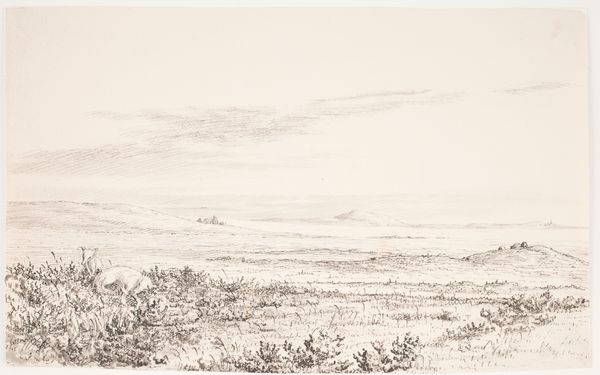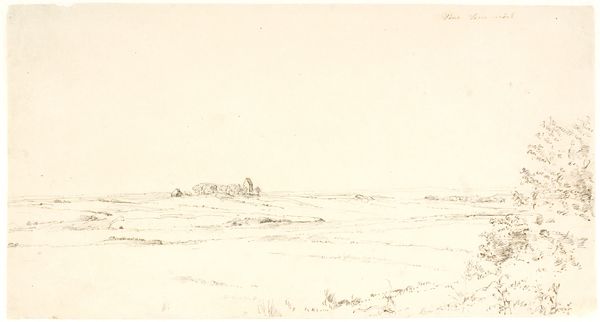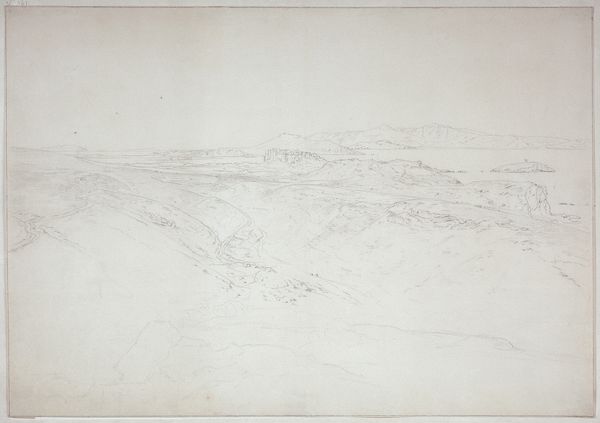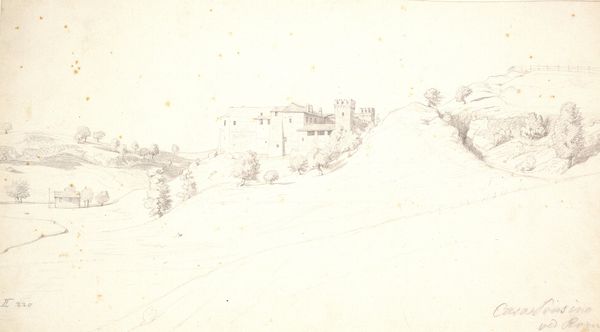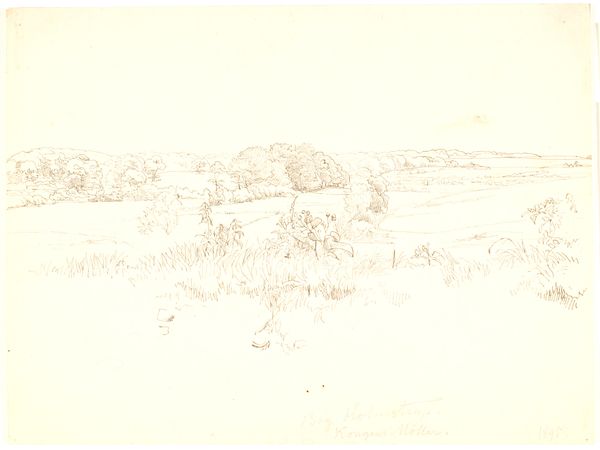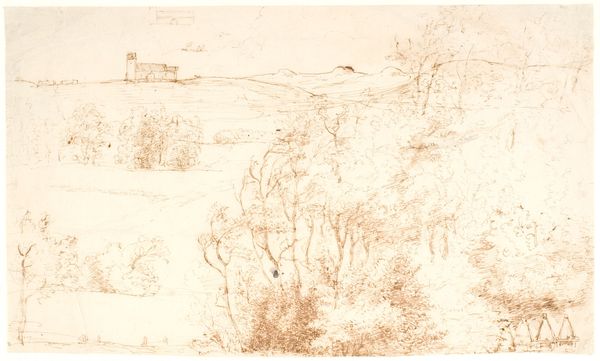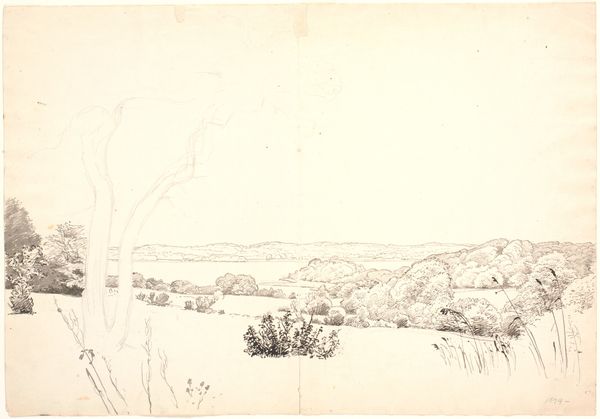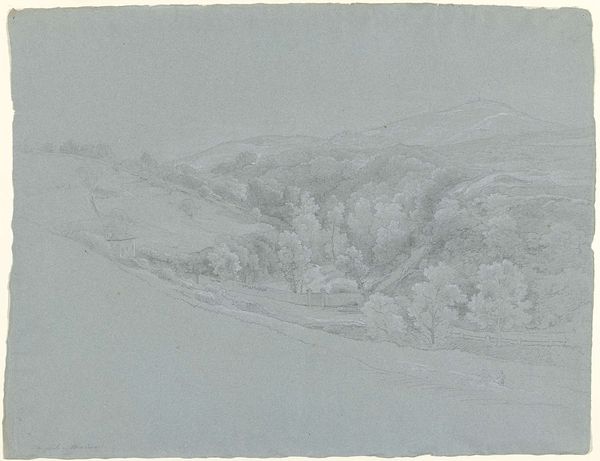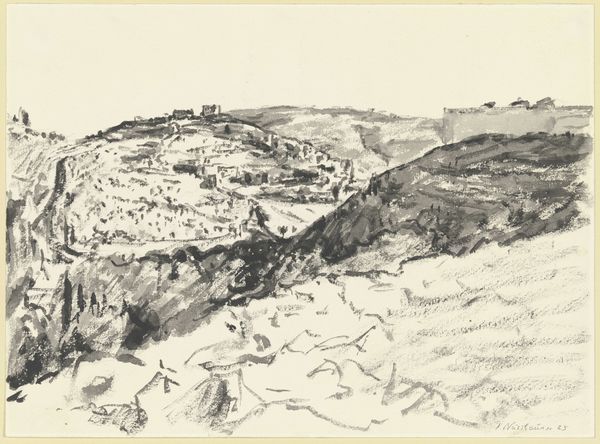
Dimensions: 285 mm (height) x 425 mm (width) (bladmaal)
Curator: P.C. Skovgaard created this landscape drawing, “Bakket landskab ved Himmelbjerget,” in 1867. Skovgaard, of course, is celebrated for his contributions to Danish Golden Age painting, particularly his romantic and realistic depictions of the Danish countryside. This work is rendered in pencil on paper. Editor: There's an immediate sense of tranquility; it's quiet, contemplative. The light pencil strokes give it a delicate, almost ethereal quality. The rolling hills remind me of ancient earthworks, like burial mounds—resonant with generations and cultural memory. Curator: It's tempting to consider Skovgaard's work through the lens of national identity, linking the landscape to Danishness. However, I'd push for an understanding that acknowledges how these landscapes also embody issues of land ownership, class divisions, and the changing roles of agriculture and industrialization. Who has access to this "nature," and what does its idealized representation obscure? Editor: That resonates. These idealized landscapes, though, also tap into deeper symbolic resonances. Hills themselves can signify challenges, ascensions, while open fields might symbolize freedom and potential. The specific trees Skovgaard selects surely carry folklore meanings from his time. What specific botanical symbols can be decoded to understand 19th-century cultural values or aspirations for the landscape's social and ethical future? Curator: The Romantic movement, to which Skovgaard belonged, embraced ideas about individual freedom. Perhaps then this work suggests an allegory of overcoming constraints and obstacles to reach greater personal understanding. We might consider if such freedom extended to various social groups in Denmark at the time or if Skovgaard's vision has socio-political limitations. Editor: Considering all the layers of potential embedded meanings, it shifts how one appreciates it, right? What started as a tranquil, straightforward drawing reveals the quiet but potent cultural conversation around humanity's complex ties to their land. Curator: Precisely. This pencil drawing asks us to consider art history, but it demands we use theory, feminist criticism, and a deep understanding of societal dynamics, all to engage fully with what's displayed. Editor: This landscape now emerges for me not just as seen—but envisioned. A potent synthesis of natural, cultural and personal meaning waiting to be unpacked by a viewer's careful attention and informed awareness.
Comments
No comments
Be the first to comment and join the conversation on the ultimate creative platform.

